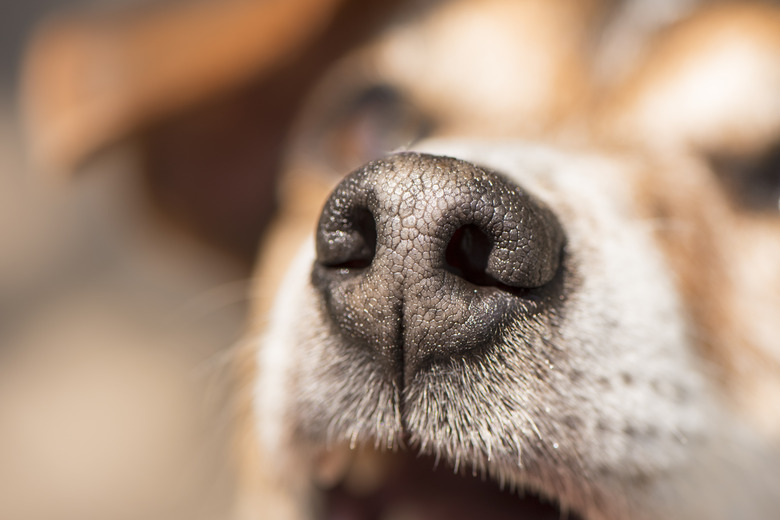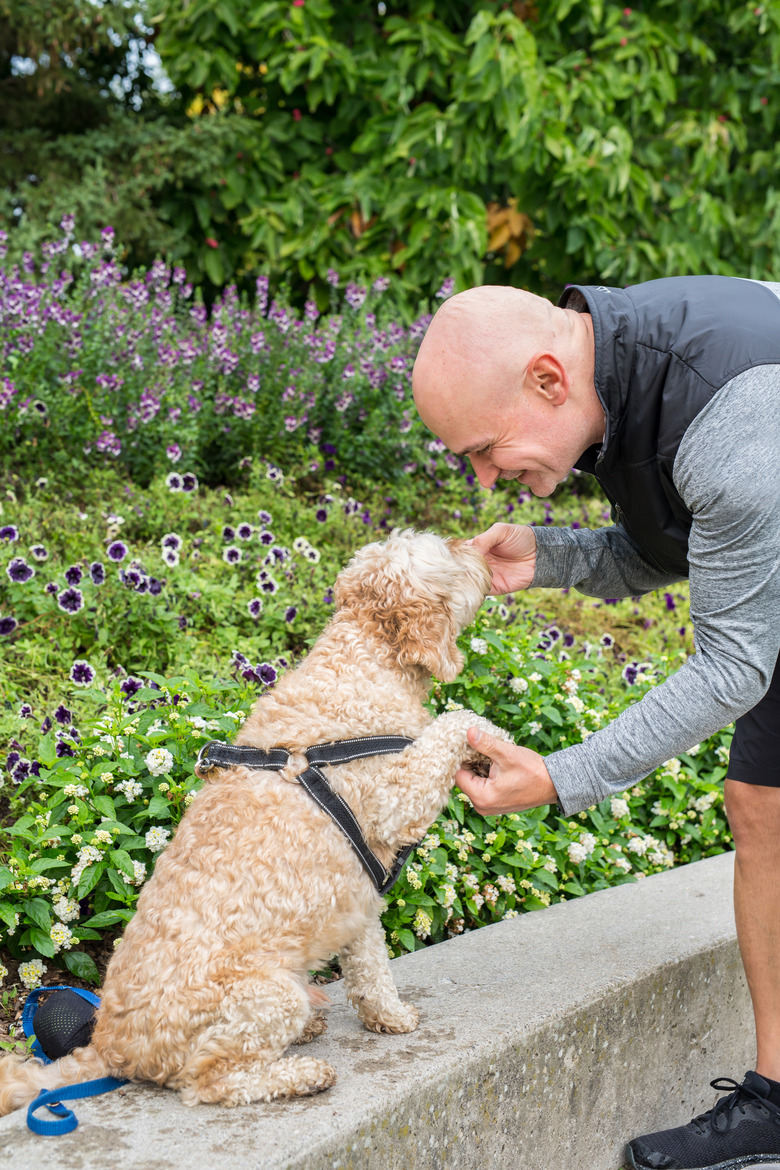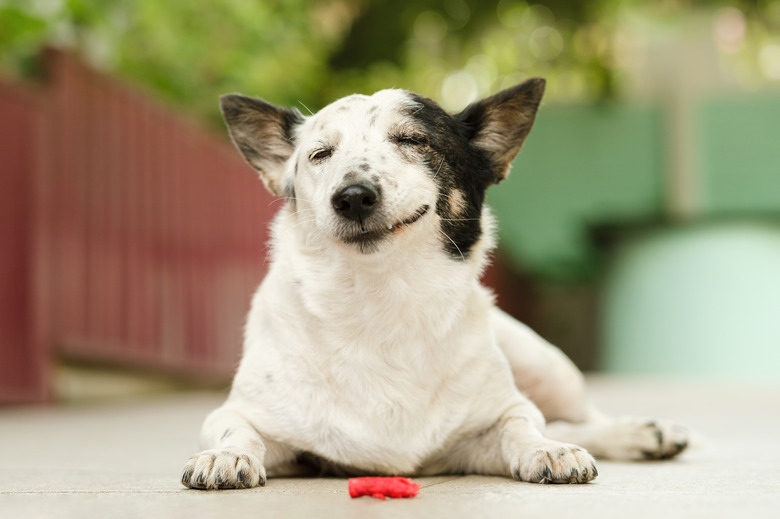Hair Loss On The Snout Of A Dog
Save for a few specific breeds, like Peruvian Inca, Mexican hairless, or Chinese crested dogs, most dogs have a solid coat of fur covering nearly every inch of their bodies. Over time, thanks to aging or due to disorders like hypothyroidism or Cushing's disease, some dogs can experience hair loss or hair thinning. Sometimes, a dog may appear to have little or no hair on their face. If you notice hair loss on your dog's snout, particularly around their nose or mouth, you'll definitely want to treat the issue, but first you'll need to identify the exact cause.
Hair loss on the snout due to allergies
Hair loss on the snout due to allergies
A dog losing hair around the mouth or nose area should be watched closely, but sometimes, the cause of the hair loss isn't attributed to a serious condition. If you notice that your dog is scratching at or rubbing his nose or face into the ground at certain times of the year or if they ingest certain foods, you may have allergies to thank.
Dogs can be allergic to the same types of allergens that irritate people, such as certain ingredients or proteins in their food, seasonal pollen, dust, bug bites, human food allergies, allergies to dog food, or other immune system issues that might cause bald spots at the itching site, dry skin or itchy skin, crusting around lesions, or chewing at hot spots. A trip to your veterinarian is the best way to diagnose and treat allergic reactions in your dog. or even dust.
Parasitic infections that might cause hair loss on nose
Parasitic infections that might cause hair loss on nose
Another reason a dog may lose hair on their body, including their face, is because of a parasitic infection. Parasites like fleas and mites can lead to incessant itching due to irritation on the skin. Flea allergy, which is known as flea allergy dermatitis, can lead to loss of hair, itchy uncomfortableness, and even bacterial infection or skin infection.
Mites, such as demodex or scabies, are parasites that live within a dog's hair follicles and not on the surface of the skin like fleas. Demodex is a mite that all dogs normally have but in some cases they overgrow and cause skin issues. Scabies is not a mite that dogs normally have.
Fungal infection might be the culprit for your dog’s hair loss
Fungal infection might be the culprit for your dog's hair loss
Hair loss on your dog's snout can also be caused by fungal infections like ringworm. Unlike parasites, ringworm, despite its parasitic sounding name, doesn't bite the skin but actually lives on it, which is known to cause hair loss. Ringworm is a fungus that feeds on the keratin found in the surface layer of the skin and results in hair loss around the affected area, usually in a circular or ring-like shape.
Other reasons for a dog’s hair loss
Other reasons for a dog's hair loss
There's also the chance that your dog's hair loss is due to anxiety while being kenneled. Some dogs insistently stick their snout through the bars of the kennel because of uneasiness or unrest, which can cause, over time, the hair on their snoot to be rubbed off.
If you notice your dog losing hair on the nose area specifically, their condition can be classified as nasal dermatosis. In addition to the aforementioned causes of hair loss, additional reasons may include immune-mediated diseases like systemic lupus, discoid lupus and pemphigus, all of which typically display side-effects like hair loss around the muzzle and sometimes, ulcers. Oftentimes with these skin diseases, you may also notice that a dog's nose is raw, pink and may also lose pigment altogether before taking on a reddish hue.
Additionally, a dog that loses hair on the bridge of their nose could be diagnosed as having the condition called nasal solar dermatitis. This type of hair loss occurs when a dog's skin has an adverse reaction to sunlight, resulting in hair loss and sometimes a reddening of the skin in the affected area. Also known as "collie nose," this can sometimes lead to ulcers on the skin of your dog's nose. Nasal solar dermatitis tends to affect dogs that are exposed to sunlight over a period of time — mild forms of the disorder may appear as a sunburn, but chronic nasal solar dermatitis can result in large patches of missing fur, scaly skin and crusted ulcers.
Treating alopecia in dogs
Treating alopecia in dogs
In order to effectively treat alopecia, which is the scientific name for hair loss, on your dog, you'll first need to identify the cause of the problem, which can be done with the help of a veterinarian. They may need to do a skin scraping and skin cytology to microscopically evaluate any organisms, fungi, or cells found on your dog to provide a diagnosis. In some cases, they may need to do a biopsy. Certain breeds of dogs have very deep hair follicles and mange mites won't be detected on a skin scraping.
If parasites or fungi like ringworm are the problem, medicated drops for fleas or a medicated antifungal cream or antifungal shampoo for ringworm will usually clear up the problem unless there is an underlying issue with your pet's health. For more serious matters, oral medication may be prescribed to treat the condition and avoiding exposure to sunlight and other irritants may be recommended.
The bottom line
The bottom line
There are many possible causes for hair loss on your dog's nose that can range from biological issues, such as allergies, or underlying causes such as parasites, fungi, or skin problems due to your dog's breed. The best way to find treatment that will help you dog is to consult your veterinarian and ask him or her to run tests to determine the underlying cause.


